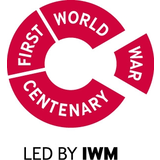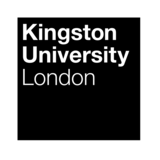Joint War Committee activities
During the First World War
Following the outbreak of war in August 1914, the British Red Cross formed the Joint War Committee with the Order of St John. They pooled their fundraising activities and resources and worked together under the protective emblem of the red cross.
The Joint War Committee organised volunteers alongside technical and professional staff. It also supplied the machinery and mechanisms to provide services in Britain and in the conflict areas of Europe, the Middle East, Russia and East Africa.
1909 scheme for the organisation of voluntary aid in England and Wales
On 16 August 1909, a scheme began to organise voluntary aid in England and Wales. A similar scheme was established in Scotland in December. These were instrumental in offering support and resources to territorial medical services during the First World War.
In the weeks following the outbreak of conflict in Europe, many people offered to help the war effort. The majority of eligible women joined the Voluntary Aid Detachment (VAD) to provide aid to sick and wounded soldiers.
Voluntary Aid Detachments (VADs)
Members of the British Red Cross and the Order of St John were organised into VADs. The term ‘VAD’ was used for an individual member as well as a detachment. All members were trained in first aid and some trained in nursing, cookery, hygiene and sanitation.
The majority of female VADs volunteered as nurses, trained by the Red Cross. They were despatched throughout the UK and Europe during the conflict.
Training
Classes in first aid, home nursing and hygiene were carried out by approved medical practitioners, and classes were offered in cookery. The VADs practised the work of a hospital ward and many trained in an infirmary. Male detachments were trained in first aid in-the-field and stretcher bearing.
Specialist classes on massage or using an x-ray machine were available to VADs who showed talent. Classes and examinations were arranged locally by divisions until July 1916 when they were held at the College of Ambulance, 3 Vere Street, under an agreement with the owner, Sir James Cantlie. The fee to be examined was 1s 6d for evening candidates and 2s for day candidates. Two Red Cross officers supervised the examinations.
Special Service
A new system of 'Special Service' was introduced to supply nurse VADs in Royal Army Medical Corps (RAMC) hospitals. These had formerly been staffed exclusively by army nurses and orderlies from the RAMC. VADs were also posted to Red Cross hospitals in England and France.
General Service
In addition to these 'Special Service' nurses, a 'General Service' section of the VADs was established in September 1915. Members were supplied to replace men in hospitals, who were then sent to the field. VADs carried out the men’s duties and some covered civic positions such as dispensers, clerks, cooks and storekeepers.
Overseas Service
VADs were sent abroad during both world wars as the Committee and the Organisation operated commissions overseas in countries such as France, Italy and Russia. Male detachments were frequently sent to France to work as transport officers or orderlies in hospitals. VADs were so keen to assist that a circular had to be issued by the War Office in October 1914 stating that all VADs should hold themselves ready and not leave the country without permission.
Auxiliary hospitals
During the war, the Red Cross provided auxiliary hospitals and convalescent homes for wounded servicemen, a service which the organisation had prepared for during peacetime. Despite this preparation, on the outbreak of war both the Joint War Committee and the War Office were inundated with offers of additional buildings to use as hospitals.
It was the Committee’s job to sort through these 5,000 offers to assess the buildings’ suitability. The premises were varied and included anything from town halls and elementary schools to large and small private houses, both in the country and in towns and cities. Those deemed suitable were established as auxiliary hospitals. These were attached to Central Military Hospitals, which directed the movement of the patients, who remained under military control.
There were over 3,000 beds available in these hospitals, which were administered under county directors. They were usually staffed by a commandant, a quartermaster, a matron and members of the local VAD. In many cases local women from the neighbourhood volunteered part-time, although it was often necessary to supplement voluntary work with some paid roles, such as cooks. Local medics usually volunteered, despite the extra strain that the medical profession was under at that time.
The patients at these hospitals generally did not have life-threatening injuries and needed to convalesce. The servicemen preferred the auxiliary hospitals to the military hospitals as the discipline was not as strict, conditions were less crowded and the surroundings were more homely.
From World Cup to WWI hospitals: the surprising history of English cricket grounds
Working parties
On the outbreak of the war, the Red Cross was practically the only organisation ready to collect and distribute clothing and provisions. It had established the greatest number of working parties throughout the country.
The parties were formed with the co-operation of the surrounding villages. Though not strictly Red Cross work, they organised the supply of hospital clothing including socks, shirts, blankets and belts for soldiers.
Working parties also made necessary hospital items such as bandages, splints, swabs and clothing. Many other societies, associations, guilds and funds for supplying clothing and other provisions to various units of the army and navy sprung into existence.
The Central Work Rooms
The Central Work Rooms were set up in 1915 to co-ordinate the activities of working parties throughout the country and thus avoid overlapping.
The aims were:
- to register and co-ordinate existing sources of hospital supplies, and open up fresh sources
- to act as a central bureau of information of all kinds regarding special hospital needs and any items that were urgently required
- to receive and train in the rooms themselves workers who might organise and instruct country working parties
- to promote uniformity by supplying standard patterns of hospital and surgical equipment in correct material, paper patterns, and books of instruction
- to register as home workers people who were unable, due to ill-health or distance, to work with existing working parties.
Work depots
Work depots were established in every major town to collate and despatch clothing from the working parties. Surgical stores were also created to organise store supplies including sphagnum moss, chloroform and ether. From the depots, items were sent to the Red Cross headquarters or directly to soldiers in auxiliary hospitals at home or abroad.
Male detachments
Transportation of wounded male detachments were almost entirely in charge of transporting sick and wounded soldiers from ambulance trains or ships to local hospitals. They also ferried patients between hospitals.
Male detachments were also frequently sent to France to work as ambulance drivers, often coming under fire as they transported men away from the frontline.
Rest stations
Rest stations were not part of Red Cross work. However, the rest stations at railway stations were organised and manned by local VADs. They provided food and comforts for soldiers arriving by ambulance train while they waited to be transported to local hospitals or to travel to another destination.
Fundraising
Fundraising was of vital importance throughout the First World War. Money and gifts-in-kind gathered through a variety of funds, collections and donations went towards services for soldiers both at home and abroad. By the end of the war, £21,885,035 had been raised and £20,058,355 spent on hospitals, medicine, clothing, grants and aftercare for the sick and wounded.
Missing and wounded service members
In February 1915, the London Branch of the Red Cross appointed VAD members to make enquiries at London hospitals because a large number of families did not know where their loved ones were.
The VADs were provided with lists of missing officers and men. They then sent their reports to Red Cross headquarters. Later this service was taken over by headquarters, who appointed their own hospital visitor. There were offices in the UK and branches in Paris, Boulogne, Rouen, Malta, Alexandria and Salonika, all of whom went into hospitals to look for missing soldiers.
Air raid duty
The police accepted the offer of VADs for aid raid duty made by Colonel Bate, secretary for the London branch of the Red Cross. The emblem of the Red Cross seemed to inspire a feeling of confidence in the crowds which assembled in the underground railway stations and other refuges in the poorer districts of London. The first aid issues dealt with were largely fits, faints, hysteria or maternity cases.
Red Cross war library
The original war library was established at Surrey House, Marble Arch in August 1914 by Mrs Gaskell and Mr Beresford Melville to supply books and papers of all sorts to the navy and army, and to any of their hospitals. An urgent appeal was made to the local public and the response was satisfactory.
A request from the admiralty in 1914 for every sailor around the British Isles to have a book was complied with. In 1915, the Joint War Committee was asked to take over financial responsibility for the library. Subsequently it was called the ‘British Red Cross Society and Order of St John War Library, for the free supply of books and magazines to sick and wounded soldiers and sailors in hospitals and hospital ships at home and abroad’.
The books were distributed in packages in every conflict area – France, Mesopotamia, Egypt, Malta, Salonika, Italy and Bombay. During the war, 1,237,246 books were bought for the library and 2,889,233 given as gifts.
The armistice
By the end of the war the Red Cross had provided 90,000 VADs, who had volunteered at home and abroad. It was difficult to keep its vital staff towards the end of the war, principally due to the great demand for women workers in many well-paid occupations. This trend continued after the war and the number of VADs declined significantly.
Over 1,786 auxiliary hospitals had been established, with patients arriving by staffed ambulances, hospital trains and motor launches. After the war, equipment from the auxiliary hospitals was distributed to local general hospitals, rehabilitation centres, sanatoriums and other medical centres.
Over £21,885,035 had been raised through fundraising efforts and the majority of the money was spent on hospitals, medicine, clothing and care for the sick and wounded.
Sources
- Reports by the Joint War Committee and the Joint War Finance Committee of the British Red Cross Society and the Order of St John of Jerusalem in England on voluntary aid rendered to the sick and wounded at home and abroad and to British prisoners of war 1914–1919, with appendices, London 1921, HMSO
- Oliver, Beryl (1966) The British Red Cross in Action; London; Faber and Faber Limited
You may also be interested in:
Volunteers during WW1
90,000 ordinary men and women volunteered with the Red Cross during WW1 in hospitals, driving ambulances, and more.
Stories from the First World War
From canine first aiders to WW1 volunteer love stories, and more.
Who were the VAD volunteers?
Find out about how VADs were recruited, the duties carried out and awards they won.


